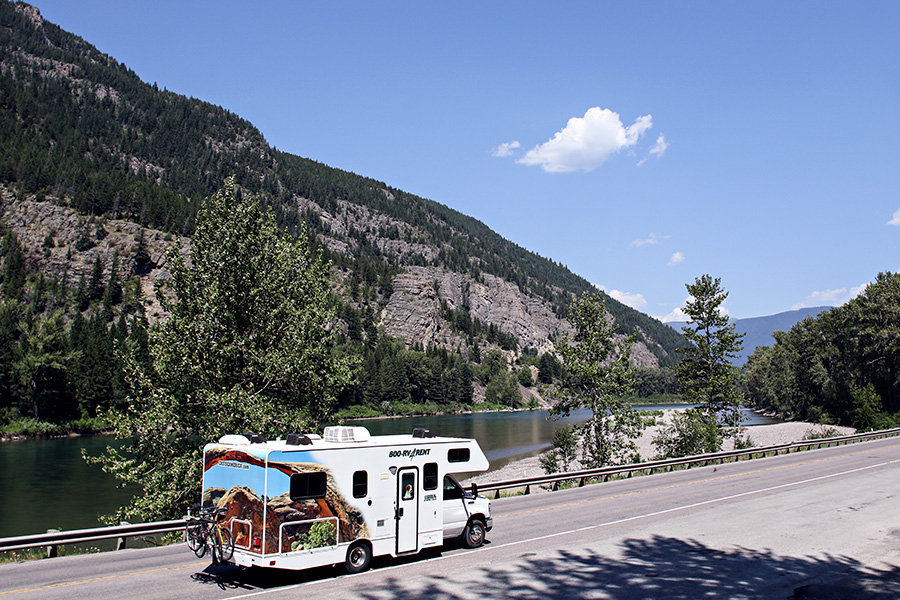The next phase of Montana’s plan to gradually reopen the economy is set to begin June 1, Gov. Steve Bullock announced Tuesday, detailing a transition that will include lifting a 14-day quarantine order on out-of-state travelers.
Speaking to reporters less than a month after he announced his phased approach to reopening the state’s economy, Bullock said he made the determination to enter Phase Two of the “Reopening the Big Sky” plan as Montana continues to report the lowest number of positive COVID-19 cases and hospitalizations per capita in the country.
Phase Two guidelines allow maximum group sizes of 50 people to convene in circumstances that allow for adequate physical distancing, which is up from Phase One’s maximum of 10 people, and also permit bars, restaurants, breweries, distilleries and casinos to increase their occupancy threshold to 75%, up from half.
Gyms, indoor group fitness classes, pool, and hot tubs can also operate at 75% capacity, but only if they can adhere to strict physical distancing and frequent sanitation protocols. Concert halls, bowling alleys and other places of assembly may operate with reduced capacity and distancing guidelines.
“Montana has been an example for the rest of the nation in our response to this global pandemic. I have no doubt that we can continue to be that example, but only if Montanans, businesses, and visitors alike continue to take seriously the responsibility we all have in protecting others,” Bullock said. “As we continue with the next phase in our reopening, our goal together as Montanans for the foreseeable future is to mitigate the spread of the virus.”
Bullock said his decision to lift the 14-day travel quarantine for out-of-state visitors to Montana is a critical step toward reinvigorating a sluggish economy, but will be met with continued vigilance as the state ramps up surveillance testing in gateway communities that see a surge in visitation during the summer months.
For example, the Montana National Guard will continue to conduct screenings in airports and train depots and refer anyone with COVID-19-related symptoms to local public health officials, while surveillance testing in gateway communities flanking Glacier and Yellowstone national parks will help local health officials detect early-warning signs of community spread.
Tourists began entering Yellowstone’s Wyoming entrances this week for the first time in two months, and Bullock said its Montana entrances are on track for a June 1 opening.
Bullock said his administration is in the nascent stages of conversations with Glacier Park Superintendent Jeff Mow, as well as Blackfeet tribal and local county health officials with adjacent jurisdictions, and that he’ll “have more to share soon.”
Montana’s gradual and phased plan to reopen began on April 26 with Phase One, which allowed schools, places of worship, retail businesses, restaurants, breweries, and bars to reopen under social distancing guidelines.
Bullock provided additional guidance to allow gyms, movie theaters, and museums to reopen under the first phase on May 15.
“Nearly one month ago I announced that Montana was ready to create a new normal by entering into Phase One,” Bullock said. “Our quick, aggressive and early actions to close schools, and then bars and restaurants, and then to enter into a stay-at-home order, put us in a better position — and in many ways a starkly better position — than many other states to allow us to start reopening.”
Since Phase One guidelines went into effect, Bullock said the state has confirmed 22 new cases of COVID-19 and continues to meet criteria by the Centers for Disease Control and Prevention for a downward trajectory of positive tests.
During his announcement of the Phase Two transition, Bullock also detailed an increase in testing across the state and in tribal communities like the Blackfeet Indian Reservation, which shares a boundary with Glacier National Park.
“We are grateful for Governor Bullock’s diligence as he works to reopen Montana safely and continues to and consider the unique concerns and challenges in tribal communities including a large population of elderly Montanans and families in multi-generational households,” according to a statement from the Blackfeet Tribal Business Council. “The Blackfeet Tribal Business Council appreciate Governor Bullock has respected tribal sovereignty and decisions to put in place more restrictive measures to keep tribal communities safe and has supported our efforts to contain the virus through increased testing.”
Bullock said Montana is still ramping up testing capacity to eventually meet a target of 60,000 tests a month, while still prioritizing testing for vulnerable Montanans. A total of 5,600 tests were conducted last week, he said. Increased testing continues with sentinel testing efforts in nursing homes and assisting living facilities, testing events in tribal areas, and drive through testing being conducted at a few sites.
The risk of a surge in positive cases of COVID-19 accompanies any loosening of restrictions in the age of the pandemic, Bullock said. However, the state is in a position to ensure the ability to contact and trace new cases, and has plans in place to add additional contact tracers to the existing workforce.
“We can’t prevent all cases, but there are things we can do to allow Montanans to resume normal lives while still preventing outbreaks and without overwhelming the health care system,” Bullock said. “Our goal is now and has always been to mitigate the spread of this virus, and we need all Montanans to be in this together.”
